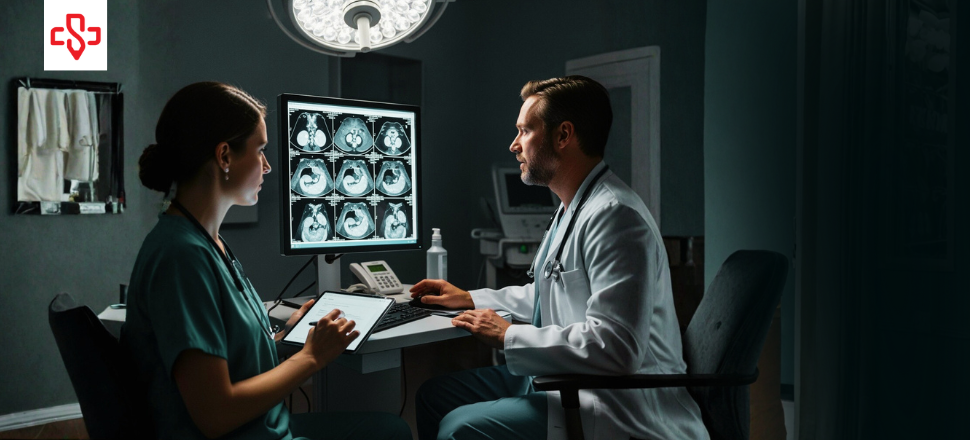Artificial intelligence (AI) has made waves in nearly every industry, and healthcare is no exception. From predictive analytics to automated transcription, hospitals and clinics are exploring new ways to streamline workflows. But when it comes to documentation, AI transcription tools still fall short.
That’s why live medical scribes remain indispensable. While software can record words, only humans can interpret meaning, capture nonverbal cues, and adapt in real time. In the battle of efficiency versus accuracy, medical scribes consistently prove that human context is irreplaceable.
What AI Transcription Promises — and Where It Falls Short
AI-powered transcription tools offer convenience. They listen, record, and generate text from provider-patient conversations. On the surface, this seems like a solution to EMR fatigue. But real-world use reveals limitations:
- Misinterpretation of Medical Terms: Complex terminology often transcribes incorrectly.
- Context Blindness: AI doesn’t distinguish between casual conversation and clinically significant detail.
- Nonverbal Ignorance: Body language, gestures, or environmental cues go undocumented.
As the Journal of the American Medical Association noted, “Voice recognition tools can reduce typing burden, but without human oversight, accuracy and completeness remain problematic.”
The Human Advantage: Live Medical Scribes in Action
- Contextual Understanding
A medical scriber knows when a provider is reasoning through a differential diagnosis versus making a final decision. AI tools often blur the two, creating confusion in records.
- Nonverbal Observation
Providers often use gestures or shorthand during exams. A live emergency department scribe captures these subtle details — something no transcription tool can achieve.
- Real-Time Adaptability
When emergencies escalate, providers shift rapidly. A live ER medical scribe adjusts instantly, while AI software continues recording without context or prioritization.
Emergency Departments: The High-Stakes Test
Nowhere is the difference clearer than in the ED. Emergency medicine is fast, noisy, and unpredictable.
ED medical scribes thrive here because they:
- Differentiate critical provider instructions from background noise.
- Attribute actions to the correct provider in team settings.
- Maintain real-time accuracy under pressure.
AI transcription tools, reliant on clear audio and structured conversations, struggle in such chaotic environments.
Specialty Clinics: Depth Over Words
In dermatology, cardiology, and urology, details matter. A dermatologist pointing silently to a lesion or a cardiologist adjusting medications based on a test result requires documentation that goes beyond words.
Live EMR scribes ensure those details are captured. AI transcription, limited to audio, often misses them — creating incomplete or inaccurate records that affect care and reimbursement.
Why Human Context Protects Compliance and Revenue
Documentation isn’t just a clinical requirement — it’s a financial safeguard. Hospitals rely on accurate notes for coding, billing, and audit protection.
Live medical scribes provide:
- Coding Accuracy: Complete documentation ensures proper reimbursement.
- Audit Readiness: Human-verified notes stand up better under payer scrutiny.
- Compliance Assurance: Providers remain protected against regulatory risks.
AI transcription, while efficient, often produces records that require extensive editing. This reintroduces the very burden it was designed to remove.
Blending Technology With Human Insight
The best documentation models don’t reject technology — they combine it with human expertise. AI transcription can serve as a tool, but it requires oversight from a live medical scriber to ensure completeness and accuracy.
This hybrid approach balances speed with reliability, but the cornerstone remains human judgment.
As the American College of Emergency Physicians emphasizes: “Accurate, real-time documentation depends on context. No technology can yet replicate human clinical judgment.”
The ROI of Choosing Live Scribes Over AI Alone
Direct Benefits
- Fewer denied claims due to incomplete notes.
- More accurate coding, protecting revenue.
- Higher provider throughput without additional documentation burden.
Indirect Benefits
- Improved provider satisfaction by reducing after-hours charting.
- Higher patient satisfaction through more engaged interactions.
- Reduced turnover, lowering long-term staffing costs.
When administrators factor in both direct and indirect benefits, live medical scribes consistently deliver stronger ROI than AI transcription.
Where Humans Still Outperform Machines
AI has a role to play in healthcare, but it isn’t ready to replace humans in documentation. Software can transcribe words, but it can’t interpret meaning, capture context, or integrate seamlessly into care teams.
That’s why live medical scribes continue to outperform AI in both emergency departments and specialty clinics. By combining accuracy, adaptability, and human judgment, they protect compliance, revenue, and patient care.
The future of documentation may involve AI, but the present — and the foundation of accuracy — still belongs to humans. For hospitals and clinics committed to quality, live medical scribes remain the clear choice. Request a free quote with Scribe.ology now for live medical scribes.



